In the previous part, Part 5, we had just finished our full day at the St. Augustine Beach KOA campground in St. Augustine, Florida. We pick up the story the next morning, March 11th, as we head to the Fort Pierce Downtown KOA in Fort Pierce, Florida. We’re still not seeing a lot of concern about COVID-19 with store parking lots full and no signs of social distancing.
COVID-19 Status
The COVID-19 case count in the USA jumped dramatically during the two days that we were in St. Augustine. On the 9th, there were 645 cases, a 30% increase from the 497 the day before. On the 10th, the case count jumped to 936, an increase of 45% over the previous day. The death count was similarly relentless at 26 on the 9th, up 24%, and 31 on the 10th, a further increase of 19%. Despite these increases, there didn’t really seem to be much effect on the daily behaviour of the people we saw.
Preparing to Leave the St. Augustine Beach KOA
We have a routine that we follow when we leave a campground. One of them is tracking our distances. The trailer has maintenance requirements such as bearings and brakes that are triggered based on distance travelled. But, the trailer has no odometer. So, we track the truck’s odometer when we leave a campground and when we get to the next destination. That way, we can keep track of the distance that the trailer has travelled. We use a spreadsheet for this. It also tracks the maintenance work for the trailer so we know when it’s due for its next maintenance procedures.
Similarly, we have checklists to follow such as ensuring that the trailer’s lights are working properly. When we couple the truck to the trailer, I roll down the windows and turn off the radio. That way, I can hear any shouts of alarm from Joanne as I’m backing up. I also put on the four-way flashers for the back-up movement.
Once the trailer is coupled, we lock the jaw lever so that it can’t uncouple. We also connect the trailer’s emergency brake cable to the truck so that if, somehow, the trailer does uncouple while underway, the emergency brake cable will be pulled off the trailer, thereby engaging the trailer brakes. Then, we connect the electrical cord from the trailer to the truck. That allows the truck to charge the trailer battery and control the various lights such as brake lights. Finally, we retract the landing gear of the trailer, check the trailer tire pressures, pull ahead, scan the campsite for anything we left behind, and then away we go.
Light Checks
We confirm that the truck/trailer electrical connection is working by verifying that the trailer lights are now flashing like the truck’s. Next, we should check that the reverse lights, turn signals, and running lights are all operating. Fortunately, our truck, a 2018 Ford F-350 SuperDuty Dual-Rear-Wheel (dually) pickup truck, has a feature that checks the trailer light connections for you. I usually take a picture of it as well as the two trip pages of the dash–the daily trip details for how far the trailer travelled, as well as the overall trip details for the truck on the entire trip. Below is the picture of the light check we did before we left the St. Augustine Beach KOA:
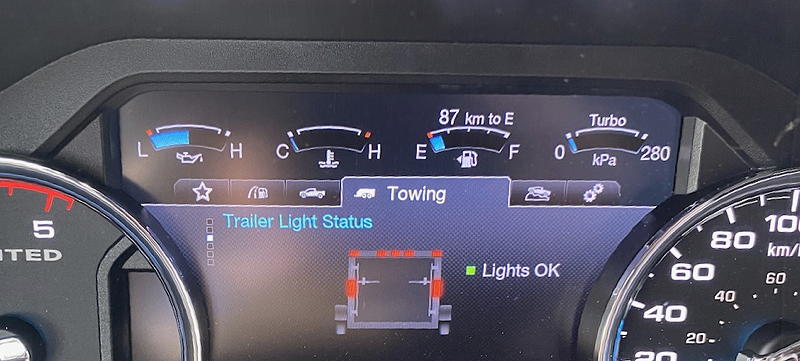
The trailer graphic displayed doesn’t match our actual trailer, of course, but it still serves its purpose–our trailer lights are all good.
The sharp-eyed reader may have noticed the fuel gauge. I didn’t. It shows that the fuel tank is nearly empty and that we can travel about 87 km (54 miles) until the fuel tank is empty. Clearly, I’d forgotten to fill the tank the previous evening–this is the first time that’s happened. Our journey to Fort Pierce will be about 300 km (185 miles) so, clearly, we won’t make it there with the fuel we have onboard. But, I noticed none of this at the time.
Heading to Fort Pierce
We left the St. Augustine Beach KOA at about 10:20 am–we’re slowly getting back to our normal departure times. We only went 7 km (4 miles) before the first low fuel warning appeared–the 80 km warning. That’s when I finally realized that we didn’t have enough fuel to get to Fort Pierce. Joanne had to endure a blast of my cursing at my own stupidity. Bless her heart, she immediately started looking at her iPhone for a place where we could get fuel. Otherwise, I would have had to head back to a suitable fuel station we’d passed, and turning around with the trailer attached is not as easy as just performing a U-turn.
Joanne did find a Circle K Shell fuel station that was only about nine kilometers (6 miles) away at the intersection of Florida Highway 206 and Highway 1 and it had plenty of room for us and the trailer.
When we got there, it turned out to be a great facility with modern fuel pumps. On top of that, the diesel fuel was just $2.599 per US gallon, which is pretty decent. We’ll definitely keep this station in mind for future travel in the area.
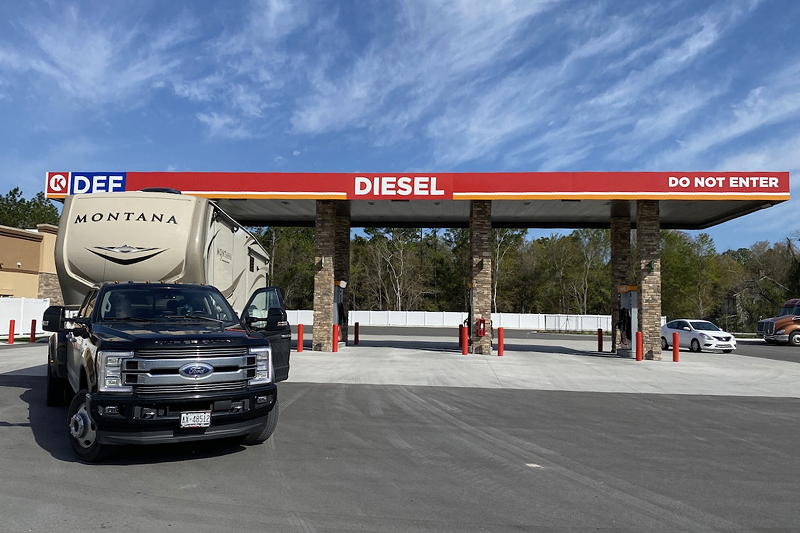
With a full tank of fuel, we were able to complete the three-hour journey to the Fort Pierce Downtown KOA with just one more stop. We finally arrived at the campground just before 2:00 p.m. with plenty of time to relax before supper.
Fort Pierce
We’d long looked forward to our stay in the Fort Pierce Downtown KOA. On our first visit in the fall of 2018, we’d stayed for six nights. In the spring of 2019, we’d stayed for eleven nights. In the fall of 2019, we’d stayed for sixteen nights. Each time, we’d wished we’d stayed longer, so this time we were looking forward to twenty-one nights in Fort Pierce, visiting the beach often along with the many stores and restaurants around us.
The Fort Pierce Downtown KOA Campground
The campground itself is the smallest one in the family of KOA campsites with just under 40 campsites. There aren’t a lot of facilities here, not even a pool. They do have the usual bathrooms and laundry facilities, though. Nevertheless, the real attraction for us is the proximity to the beach–just a mere eight-minute drive away to free parking at the beach.
The campground is oriented roughly East to West, though it’s actually about 30 degrees off that line with the West side lower (more to the South) than the East side. The North row of sites backs onto a gravel area and then a grassy area for tents. The South row of campsites, which is where we were this time, backs onto an affiliated storage area for trailers, boats, and so on.
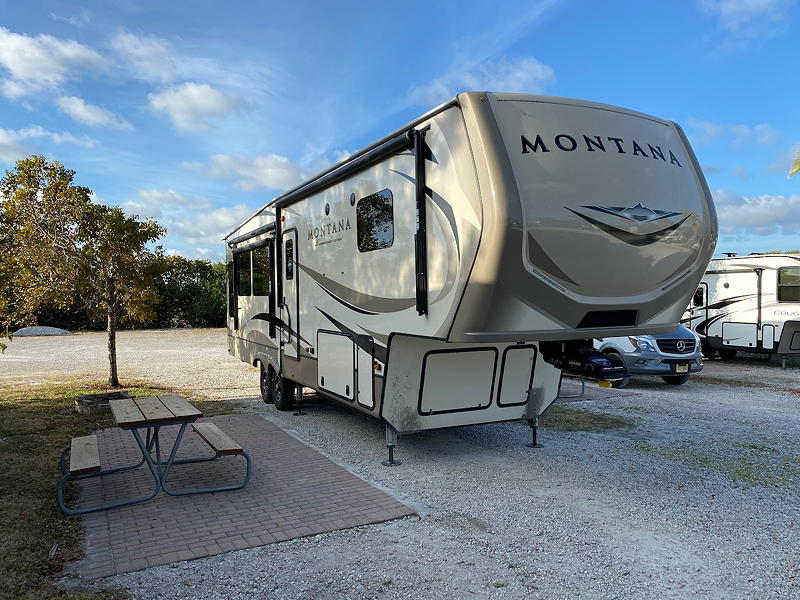
Looking to the East, you can see the main entrance at the North and the main exit to the South. In the wide angle picture below, the main entrance is on the left and the main exit is to the right.
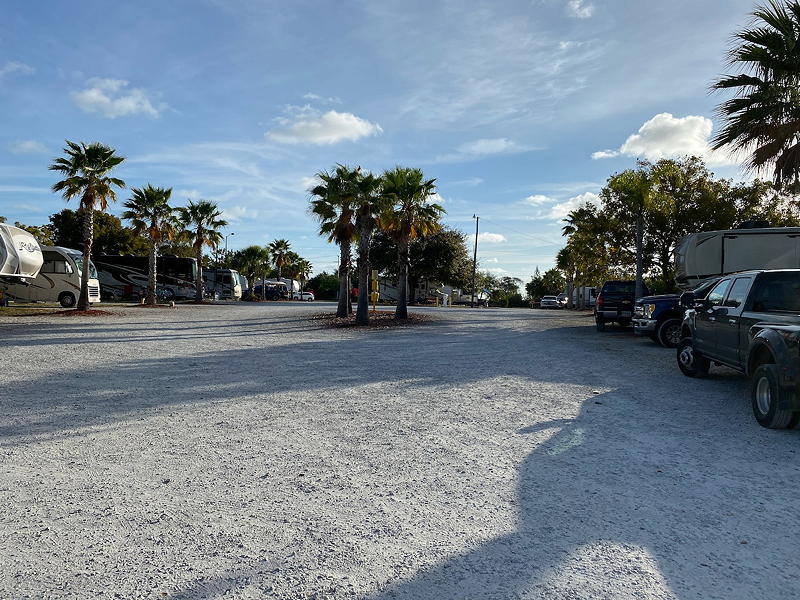
Pull-Through Sites
There are seven pull-through sites in the campground. To get to those, you need to go up a street, Sunny Lane, just to the North of the campground between the campground and the Wendy’s Restaurant, to get to the road behind the campground. That road leads to the gravel areas on either side of the campground and allows you to drive into your pull-through site.
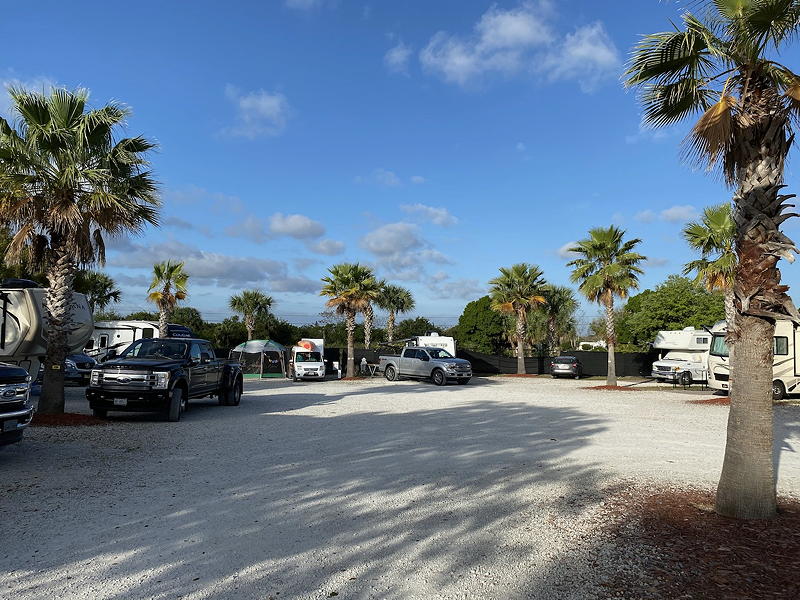
Despite them being pull-through sites, I find it easier to back out of them. Then, you can retrace your steps behind the campground, go through the Publix mall just North of the campground, and then you can make the left turn onto Route A1A at a traffic light at the mall entrance. If we were going South on A1A, we would just take an exit out of the campground itself.
After getting the trailer set up, we went to that mall just to the North of the campground. One of the things we really liked about this location when we first visited in November 2018 was the Publix grocery store that is a five minute walk from the campground. However, when we arrived in April 2019, the Publix store was closed and partly torn down to make room for a new Publix store at that location. It was still closed when we arrived again in November 2019. So, one of the first things we did this time was was to check it out. We were delighted to see that it had re-opened.
Toilet Paper
After we were at the Publix store, we went to the Family Dollar store in the same strip mall. To our surprise, we found lots of toilet paper on the shelves. Apparently, the run on toilet paper that we’d experienced in Ottawa before we left on this trip hadn’t happened here yet. That would change in the next few days.
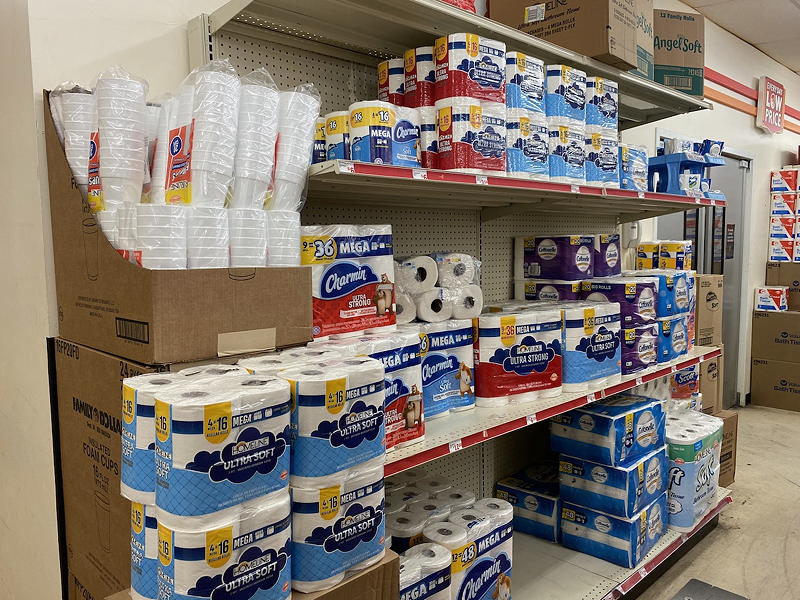
Supper Time
After checking out the Publix and Family Dollar stores, we were ready to eat. Joanne cooked a supper for us. We went for our usual evening walk and then we rested and went to bed.
The next day, we decided to eat at a Texas Roadhouse restaurant that is about a twenty-five minute drive away. There we found the first signs that COVID-19 was starting to affect our daily lives. And, little did we know, this would be our last meal in a restaurant for a long time. See Part 7 for more of the story.
This post was made public on March 26, 2020

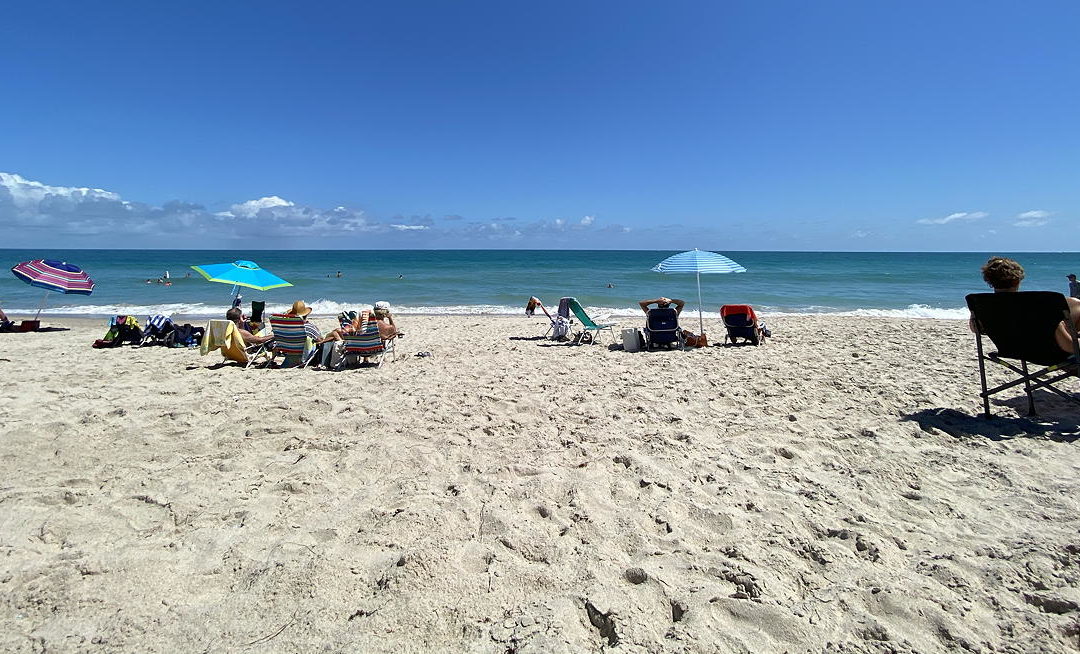
Recent Comments